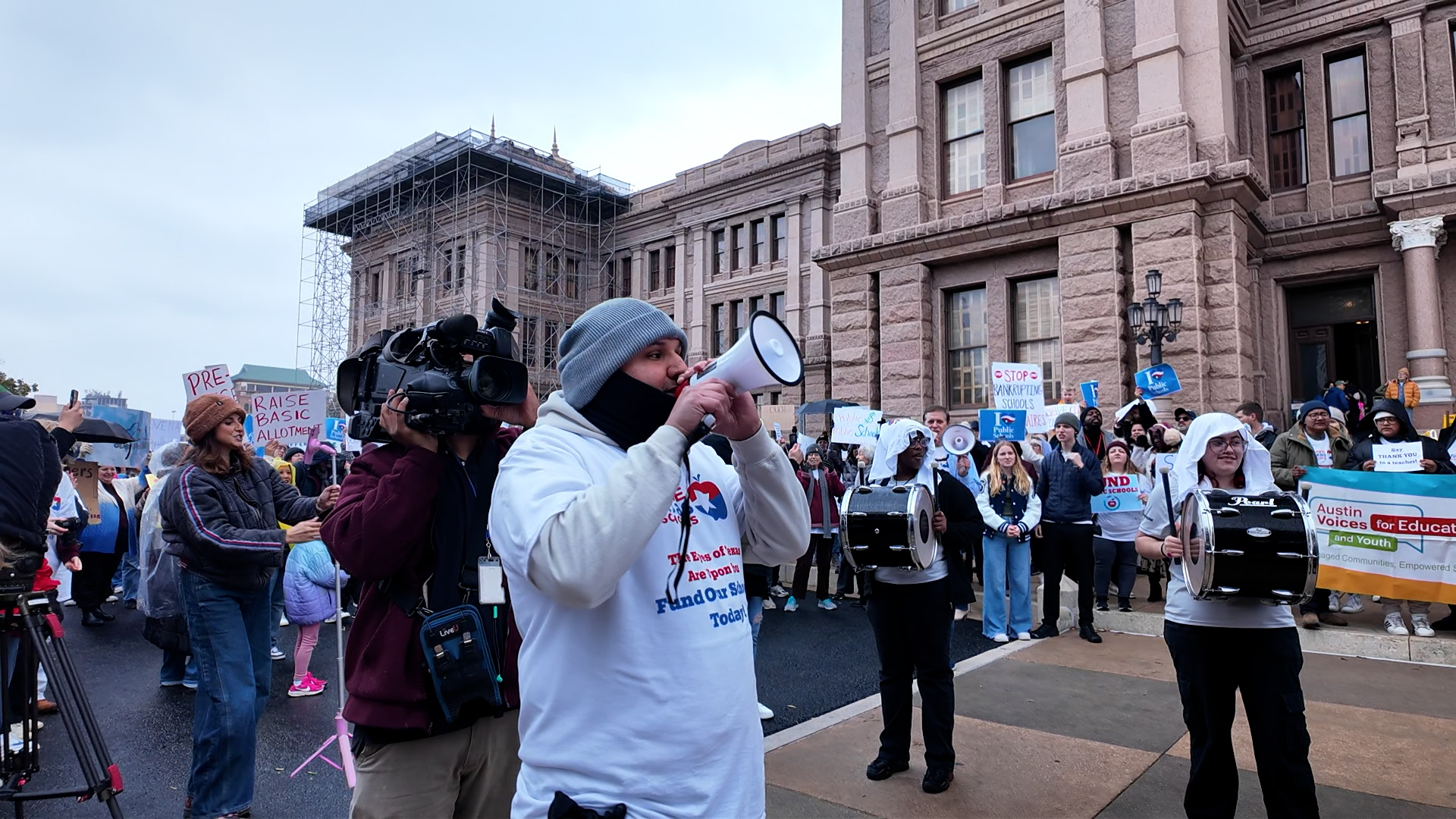How School Vouchers Could Impact Rundberg
Last month, Arminda Martinez and her family joined with many others from across the state to protest school vouchers. Martinez, a Rundberg parent and Dobie Middle School staffer, expressed concern that the cost still put so-called ‘school choice’ out of reach for many families in their community.
“It’s not fair for parents,” Martinez says. “They can’t afford taking them to private schools.”
School vouchers have long been a point of discussion at the Texas Legislature, but this year lawmakers seem poised to pass it into law, with support from a swath of new rural representatives. There’s been a lot of discussion around vouchers, both for and against them. But what are school vouchers? And how will they potentially impact communities like Rundberg?
What is a school voucher?
School vouchers are government-funded vouchers that cover educational costs, like private school tuition or homeschooling. The voucher system is often referred to as ‘school choice’ by supporters, because they believe that vouchers give families more educational options for their children.
Vouchers can come in different forms, but the one gaining the most traction in Texas are Education Savings Accounts, or ESAs.
ESAs are state-funded bank accounts filled with public funds, meaning tax dollars. Parents who remove their kids from public schools can use money from these accounts to cover educational costs like tuition, online schooling or private tutoring. Lawmakers want to set aside $1 billion dollars to start ESAs, allocating $10,000 per student. That means there’s enough money for up to 100,000 students.
Who can apply for a school voucher?
Any student zoned to K through 12 Texas schools, including students already enrolled in private school. If more people apply than there are spaces, priority will be given to students with disabilities and to families earning about 5 times the federal poverty level. Students with disabilities would be eligible for $11,500 to cover schooling costs, and homeschooled students could receive $2,000 a year.
Proponents argue that it gives middle and lower-income families more schooling options, helps homeschoolers, and makes public schools more competitive.
But opponents say vouchers take money away from public education, and that $10,000 isn’t enough to cover private tuition, if you can even find a private school in your area.
How much do private schools cost?
The average private school tuition in Texas is $11,050. It’s a little higher in Travis County–the average tuition is $16,558. Private schools also carry additional fees for things like applications, technology and materials. In Travis County, fees at private schools average $1,819. Extracurricular activities like sports or clubs and transportation are not included in most private school fees.
Are there private schools near me?
It really depends on where you live. Data from the National Center for Education Statistics show that most private schools in Texas are concentrated around major cities. Most can be found in Dallas, Austin and Houston. But in most rural areas, there are no private schools. And in 92 counties, there are less than five private schools. This is why lots of rural lawmakers have opposed vouchers in the past. Families in their districts would have few, if any, potential schools to enroll their children in if they wanted to.
Even in cities like Austin, private schools might not be accessible or affordable. In Travis county, there are 81 private schools. Only three are located in Austin’s eastern crescent, a collection of traditionally Black and Hispanic neighborhoods that have become more and more vulnerable to gentrification in recent years.
Rundberg makes up the northernmost neighborhood in Austin’s eastern crescent. There are no private schools within the community. The three closest private schools, all of which have religious affiliations, cost between $9,000 to $13,000 in tuition, not including fees. So if a family did receive a voucher, they could still have to pay roughly $3,000 out of pocket.
According to the U.S. Census Bureau, the average income in Rundberg is just over $60,000.
How do private schools compare to public schools?
If there is a school you can get into, do vouchers work? Are these better schools? It’s hard to say.
Voucher supporters say that school choice not only allows parents to move their children to better schools, but also pushes public schools to improve academics and safety to keep and attract students. Home schooling organizations and religious schools also say it will ease financial burdens on families.
U.S. News ranks Texas as 28th in Pre-K-12 education. But while public schools have to share state test scores, private schools don’t have to share that data.
Opponents point out there’s actually a lot of stuff private schools don’t have to do.
Anyone can apply to a private school, but they don’t have to accept every applicant. But public schools must provide an equal education to students of any religion, ethnicity, or level of disability. That’s because public schools get federal funding, and they have to follow federal laws. But since private schools don’t receive federal dollars, they don’t have to follow these rules. They can also be affiliated with a religion, and many are–47% of Texas private schools have religious ties, mostly Catholic and Protestant.
The Texas Private School Association says that 75% of private schools do serve students with disabilities. But since 25% do not, and access is not guaranteed through the federal Individuals with Disabilities Education Act, some disability rights advocates say that is still discrimination.
Have any other states tried a school voucher program like this?
Texas isn’t the only state interested in school vouchers. Arizona has been operating a massive school voucher program since 2022, called Empowerment Savings Accounts. The goal was that lower income families could also afford a private education.
But according to a ProPublica analysis, poorer neighborhoods in Maricopa county used fewer vouchers while their wealthier counterparts used them more. They found in one neighborhood where the average income was roughly $46,000, only one student per 100 was using a voucher. Across town in a ZIP code where the average income was over $173,000, 28 vouchers were being used per every 100 students.
And vouchers are also impacting Arizona’s budget. The cost of vouchers in 2024 was supposed to be $64.5 million, but it has since skyrocketed to $332 million, a 400% increase. Arizona is looking at making up for those losses by cutting state programs and projects.
But when it comes to budgets, Texas does have money. The state currently has a $24 billion budget surplus. But voucher opponents say that money should be used to fund public schools, which they say are underfunded. They’re also concerned vouchers will make that worse.
Texas funds public schools based on attendance. Right now they receive just over $6,000 per student. If students leave, schools get less money. But the school operating costs remain the same, putting them in a deficit. Educators and advocates have been calling for an increase in the per-pupil spending for years to catch up with higher costs from inflation and the Covid-19 pandemic. A bill was filed in the Texas House that would increase the per student allotment by $220. But that’s still much less than schools have been calling for. HB-2 is currently still in committee.
In more affluent areas, parents might be able to help shoulder some additional costs. But that can be really hard for communities like Rundberg, where more than 90% of public school students are considered economically disadvantaged.
Why are we hearing so much about vouchers?
Governor Greg Abbott has been pushing for school vouchers for years. But in the past he lacked enough support because lots of rural lawmakers opposed vouchers.
Abbott successfully campaigned against these politicians, ousting 12 voucher opponents in the March 2024 Republican primary election. He called it a “tidal wave of support” for school vouchers. One survey by the University of Texas Public Policy Project found that 52% of respondents supported starting a voucher program. That set the stage for the current session of the legislature, where both the House and Senate are poised to support a voucher bill.
What’s next?
With support in both chambers, school vouchers are highly likely to pass this year. The House and the Senate voucher plans, while different, are much more aligned than in previous sessions. But sticking points remain over which students will be prioritized, total funds given per student, and how to incorporate students with disabilities. If signed, the new law would go into effect in September. But we’ll have to wait and see who will end up using those funds, and how they’ll impact public schools.
Community journalism doesn’t happen without community support.
Got story ideas, advice on how we can improve our reporting or just want to know more about what we do? Reach out to us at news@klru.org.
And if you value this type of reporting, then please consider making a donation to Austin PBS. Your gift makes the quality journalism done by the Decibel team possible. Thank you for your contribution.
More in Resources/Recursos:
See all Resources/Recursos posts






Contact Us
Email us at news@klru.org